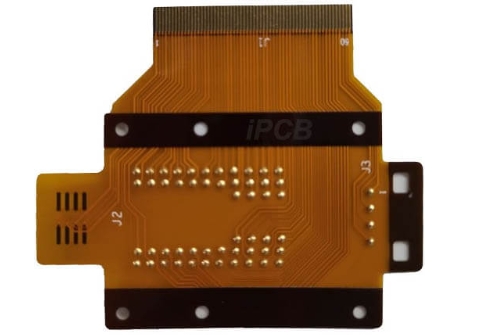FPC board is a type of PCB with a cylindrical or rectangular shape, and its size can be changed according to its application requirements.

FPC is divided into two categories: rigid and flexible. A rigid FPC helps to mechanically connect parts, but cannot bend. Flexible FPC is a double-sided PCB that can withstand bending forces.
In addition, we mainly use it for power interconnection applications. FPC board does not require any solder joints due to its ease of modification and customization.
The flexibility of FPC allows for different modification solutions. It significantly reduces the cost of printing new boards for specific applications.
We use FPC board in applications that require flexibility and conductivity. But when we need mechanical strength, we won't use it.
Due to the thin and lightweight nature of FPCs, we use them for portable devices such as mobile phones, digital cameras, and walkie talkies.
We can use them in large devices such as peripheral devices and power supplies.
The application of flexible printed circuit boards
FPC board has many applications in multiple different fields. We use FPC in solar cells, mobile phones, vehicles, and airplanes. Many of these applications require thin and durable flexible sheets.
Here, they can withstand bending, folding, or rolling.
FPC board is essential in printed circuit boards. They also work best in circuit chips printed on flexible substrates, usually made of PET or laminated silicon dioxide.
FPC is an ideal choice for PCBs because they can withstand high temperatures. They can also be easily integrated into PCB circuit boards and provide excellent flexibility.
FPC board is a flexible component used for a wide range of applications. Due to the versatility of FPC, we can use it in many different applications that require high durability
and low-cost embedded components. This flexibility and capability make FPC board an ideal component for many projects, including solar cells and mobile phones.
FPC board provides multiple power advantages, mainly due to the use of PET. As mentioned earlier, PET is a low dielectric material, therefore, FPC using PET can achieve lower linewidth variation.
Reducing linewidth variation can improve noise resistance and signal integrity.
FPC board also allows for easy wiring, thereby increasing manufacturing output. Low temperature co firing of ceramics and silica gel also contributes to the FPC process.
It provides enhanced thermal efficiency for the circuit. The most common FPC board manufacturing method is transfer printing. This is because it involves transferring electronic ink to the surface.
Then etch off a portion of the surface to create the circuit. Transfer printing allows for very high processing power. We may need circuits that support wireless communication.
FPC board has many applications in multiple different fields. We use FPC in solar cells, mobile phones, vehicles, and airplanes.
They also work best in circuit chips printed on flexible substrates, usually made of PET or laminated silicon dioxide.